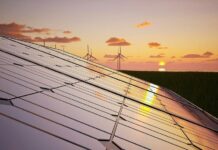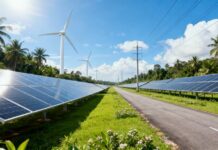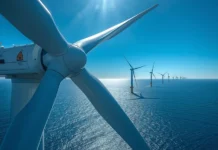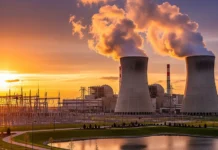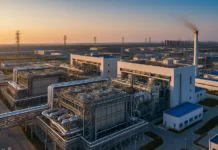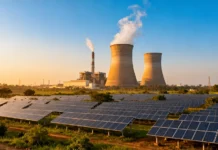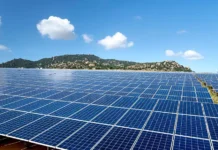China has held the title of being the world’s fastest and largest growing renewable energy producer for more than ten years now, and it has apparently gone on to widen the lead over its global rivals through almost a vertical thrust when it comes to the rollout of wind capacity since 2021.
As per the data rolled out by think tank Ember, it is well to be noted that China has gone on to add more wind generation capacity to its kitty in the past couple of years than it did in the last seven. It has in fact generated 46% more wind power than the entire Europe put together, which happens to be the biggest wind generation market.
Significantly, Europe has been the world’s top wind power producer till 2020. However, China’s broadening of the lead over its counterparts from across the world, and that too in such a tight timeline, goes on to cement its status as the global green energy leader and highlights Beijing’s commitment when it comes to refurbishing its enormous energy system, and that too at a brisk pace.
Moreover, a fast rollout in wind capacity along with the surge of 27% in solar power in 2022 from a year prior to that has aided in bolstering China’s share in electricity through clean energy sources to an unprecedented 34.2%. All this is going to aid China’s energy system in halting its reliance on fossil fuels such as coal, even though the economic surge takes the front seat in 2023 as the pandemic restrictions lift.
As China has deployed historic volumes of solar and wind power in the past ten years, wind power has grown unprecedentedly since 2020.
In the case of industrial scale electricity generation, wind power has always been given a priority over solar because of its ability of the wind turbines to make sure that the electricity gets generated round the clock while the solar generation drops as soon as the sun sets. In the past two years, the average yearly rise in the wind capacity in China was 178.6 TWh, which was 350% more than the average yearly surge between 2015 and 2020.
China’s solar, on the other hand, grew at an average of 78.3 TWh in 2021–22, which is twice the annual growth that was seen between 2015 and 2020. The recent wind power expansion in the country has been apparently higher than other major markets, with the overall growth 3.6 times higher than the growth seen in the same period in the US and Europe too. As per the information from Global Energy Monitor, China’s overall functional capacity of wind farms was 278.353 MW as of January this year. Almost 60% of the total capacity has been installed since 2015, which means that the vast Chinese wind projects are comparatively modern installations that churn out high efficiency rates.
On the contrary, 22% of US wind capacity and 27% of Germany’s were installed before 2010, thereby making these plants less efficient as compared to the latest upgrades in turbines. Notably, China’s functional wind installations have been spread across 30 of its provinces, out of which 10 provinces have a capacity that is more than 10,000 MW.
Prominent manufacturing hubs like Guangdong, Fujian, Shanxi, and Hebei have all seen steep rises when it comes to wind power generation recently, which has in turn helped domestic power manufacturers to lessen their reliance on high-emitting fossil fuels. Besides, higher renewable power generation has helped put a cap on the power costs for consumers since the coal and natural gas costs have shot up in the global markets.
Moving forward, the high levels of wind generation will play a major role in sharing increased power to factories in China. It is also expected in 2023, a greater usage of coal in China as the economy steps up in response to the stimulus measures of Beijing which are focussed on reviving growth in businesses. More importantly, further wind energy installations are expected to be part of China’s development mix, giving more thrust to the country’s energy transition efforts and thereby widening its lead as compared to other markets when it comes to renewable energy deployment.






